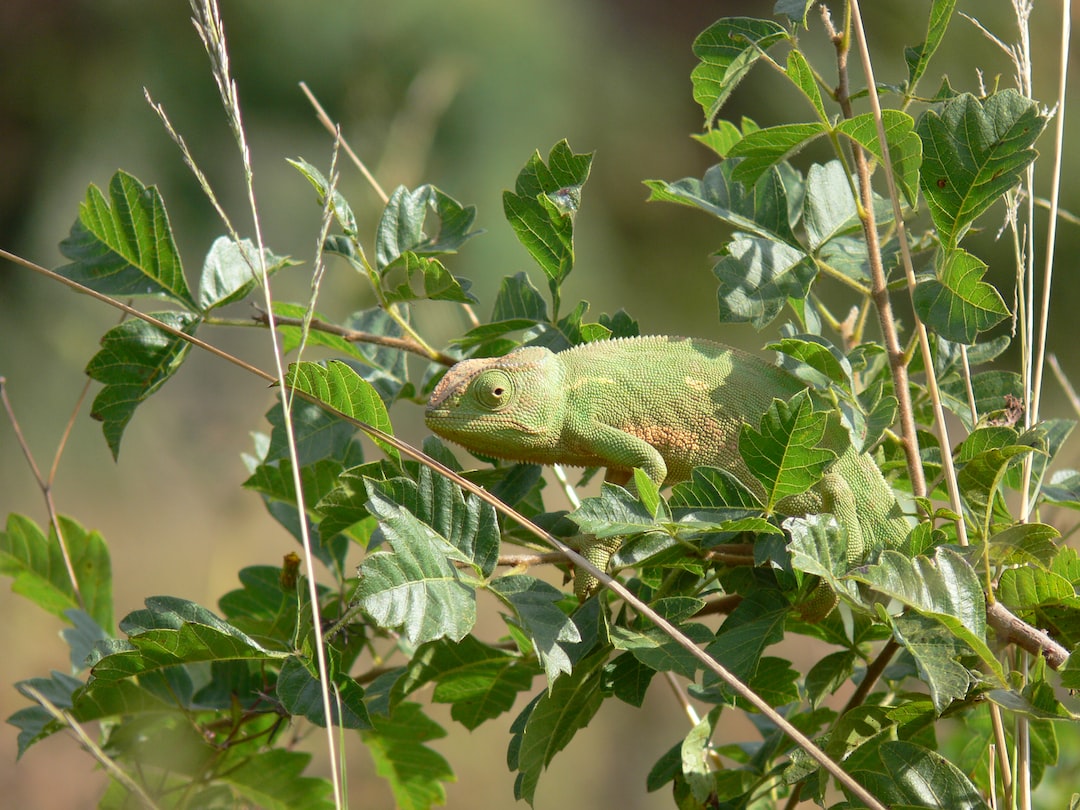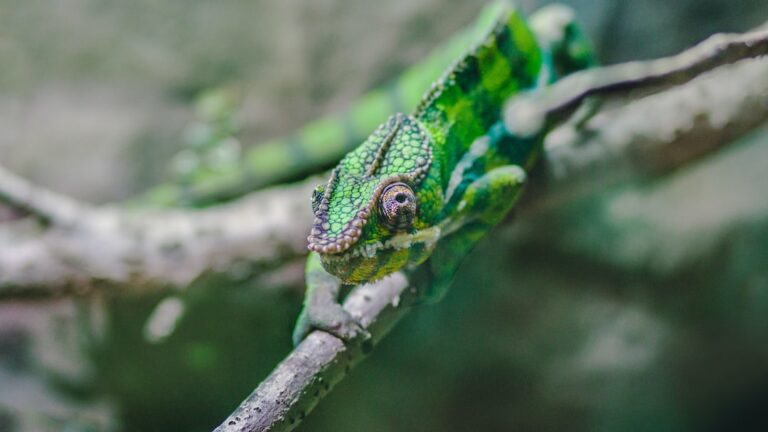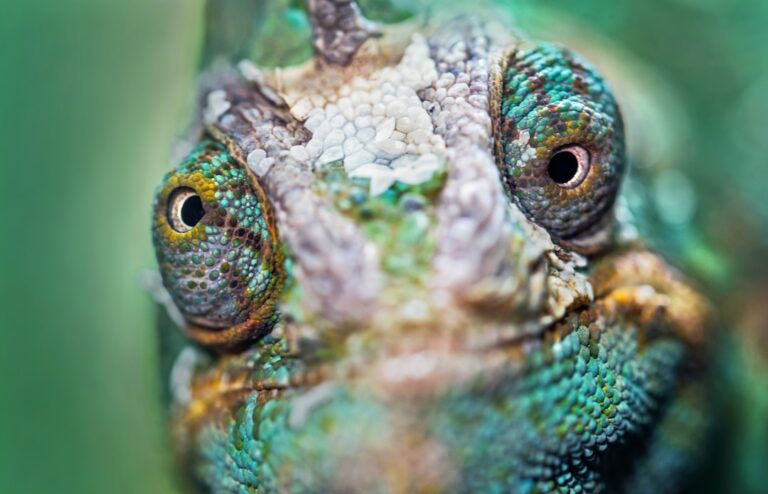Are Chameleons Aggressive?
Chameleons are fascinating creatures that have become popular pets for many reptile enthusiasts. With their unique ability to change color and their distinctive appearance, chameleons are often seen as exotic and intriguing pets. However, it is important for potential chameleon owners to understand the behavior of these reptiles in order to provide them with the proper care and environment they need to thrive.
Understanding chameleon behavior is crucial for several reasons. Firstly, it allows owners to better meet the needs of their pets and ensure their well-being. Chameleons have specific requirements when it comes to their habitat, diet, and socialization, and understanding their behavior helps owners provide these necessities. Secondly, understanding chameleon behavior can help prevent aggression and other behavioral issues. By recognizing the signs of aggression and identifying triggers, owners can take steps to prevent or address these issues before they escalate.
Table of Contents
Understanding Chameleon Behavior
In order to understand chameleon behavior, it is important to first look at their natural behavior in the wild. Chameleons are solitary creatures that spend most of their time in trees, using their unique ability to change color as a means of communication and camouflage. They are known for their slow movements and their ability to blend into their surroundings. In the wild, chameleons are primarily insectivores, feeding on a variety of small insects.
When chameleons are kept in captivity, their behavior can be influenced by a number of factors. The stress of being in an unfamiliar environment, changes in temperature and humidity, and lack of proper socialization can all impact a chameleon’s behavior. It is important for owners to observe their chameleons closely in order to understand how these factors may be affecting them.
Observing chameleon behavior is crucial for several reasons. It allows owners to monitor the health and well-being of their pets, as changes in behavior can be an indication of illness or stress. Additionally, observing chameleon behavior can help owners identify signs of aggression and take steps to address them before they become a problem.
Signs of Aggression in Chameleons
Aggression is a natural behavior in chameleons, especially during territorial disputes or breeding season. However, it is important for owners to be able to recognize the signs of aggression in order to prevent any harm to themselves or their pets.
Physically, signs of aggression in chameleons can include puffing up their bodies, hissing, lunging, and biting. These physical displays are meant to intimidate and warn off potential threats. Behaviorally, aggressive chameleons may display dominance by standing tall and extending their bodies, as well as engaging in head bobbing or tail whipping. These behaviors are often accompanied by darkening of the body coloration.
Recognizing signs of aggression is important for the safety of both the chameleon and its owner. Aggressive chameleons can cause injury with their bites or scratches, and it is important to take precautions when handling them. Additionally, recognizing signs of aggression can help owners address any underlying issues that may be causing the aggression.
Common Triggers for Chameleon Aggression
There are several factors that can trigger aggression in chameleons, both environmental and related to handling and socialization.
Environmental factors that can trigger aggression include changes in temperature or humidity levels, inadequate lighting or UVB exposure, and overcrowding in the enclosure. Chameleons are sensitive to their environment, and any changes or deficiencies can cause stress and lead to aggressive behavior.
Handling and socialization factors can also trigger aggression in chameleons. Improper handling techniques, such as grabbing or restraining the chameleon forcefully, can cause them to feel threatened and respond aggressively. Lack of socialization with humans or other chameleons can also contribute to aggressive behavior, as chameleons may see unfamiliar individuals or animals as a threat.
Identifying triggers for aggression is important for preventing and addressing aggressive behavior in chameleons. By creating a suitable environment and providing proper handling and socialization, owners can help reduce the likelihood of aggression.
Differences in Aggression Between Male and Female Chameleons
There are differences in aggression levels between male and female chameleons, particularly during breeding season. Male chameleons are generally more aggressive than females, as they compete for mates and defend their territory. During breeding season, male chameleons may display more intense aggression, including physical combat with other males.
Female chameleons, on the other hand, are typically less aggressive. They may display some territorial behavior, but it is usually less pronounced than in males. Female chameleons are more focused on finding suitable nesting sites and laying eggs.
Understanding these gender differences in aggression is important for chameleon owners. It allows them to anticipate and manage any aggressive behavior that may arise during breeding season. Additionally, it helps owners provide the proper care and environment for their chameleons based on their gender-specific needs.
How to Handle Aggressive Chameleons
Handling aggressive chameleons can be challenging and potentially dangerous. It is important to take safety precautions when handling these reptiles to prevent injury to both the chameleon and the handler.
Firstly, it is important to wear protective gloves when handling an aggressive chameleon. This helps protect against bites or scratches that can cause injury or infection. Additionally, it is important to approach the chameleon slowly and calmly, avoiding sudden movements that may startle or provoke them further.
If a chameleon becomes aggressive during handling, it is best to gently place them back into their enclosure and give them time to calm down. Trying to force or restrain an aggressive chameleon can escalate the situation and increase the risk of injury.
If an owner is unable to safely handle an aggressive chameleon, it is important to seek professional help. A reptile veterinarian or experienced reptile handler can provide guidance and assistance in safely handling and managing aggressive chameleons.
Preventing Aggression in Chameleons
Preventing aggression in chameleons is crucial for their well-being and the safety of their owners. There are several steps that can be taken to create a suitable environment and prevent aggression from occurring.
Creating a suitable environment for chameleons involves providing the proper temperature, humidity, lighting, and enclosure size. Chameleons are sensitive to changes in their environment, and providing them with a stable and comfortable habitat can help reduce stress and prevent aggression.
Proper handling and socialization techniques are also important for preventing aggression. Chameleons should be handled gently and with care, avoiding any forceful or sudden movements. Regular socialization with humans can help chameleons become more comfortable with handling and reduce the likelihood of aggression.
The Importance of Proper Chameleon Care
Proper care is essential for preventing aggression in chameleons. Providing a suitable diet and habitat is crucial for their health and well-being, which in turn can help prevent aggressive behavior.
Chameleons require a varied diet consisting primarily of small insects. It is important to provide a variety of prey items to ensure they receive all the necessary nutrients. Additionally, chameleons require access to UVB light in order to properly metabolize calcium, which is essential for their bone health.
Regular veterinary check-ups are also important for maintaining the health of chameleons. A veterinarian experienced in reptile care can provide guidance on proper diet, habitat, and handling techniques, as well as identify any potential health issues that may be contributing to aggression.
Other Factors that Affect Chameleon Behavior
In addition to environmental factors and gender differences, there are other factors that can affect chameleon behavior. Age and health are important considerations when it comes to understanding and managing chameleon behavior.
Young chameleons may exhibit different behaviors than adults, as they are still developing and learning about their environment. It is important to provide appropriate care and socialization for young chameleons in order to prevent any behavioral issues from developing.
Health issues can also impact chameleon behavior. Illness or injury can cause stress and discomfort, which may manifest as aggressive behavior. Regular observation and veterinary check-ups are important for identifying and addressing any health issues that may be affecting a chameleon’s behavior.
Are Chameleons Aggressive?
In conclusion, while aggression is a natural behavior in chameleons, it can be managed and prevented with proper care and understanding. By observing chameleon behavior, recognizing signs of aggression, and identifying triggers, owners can take steps to prevent or address aggressive behavior before it becomes a problem.
Creating a suitable environment, providing proper handling and socialization, and ensuring proper care and veterinary check-ups are all important for preventing aggression in chameleons. By understanding the unique needs and behaviors of these reptiles, owners can provide them with the care they need to thrive.
In the end, chameleons can make fascinating and rewarding pets for those willing to put in the time and effort to understand their behavior and provide them with the proper care they require. With the right knowledge and care, chameleons can live long, healthy lives as beloved members of the family.
If you’re interested in reptiles, you might also want to check out this article on do iguanas run on their back legs?. It’s a fascinating read that explores the unique locomotion of iguanas and how they utilize their hind legs for running.







